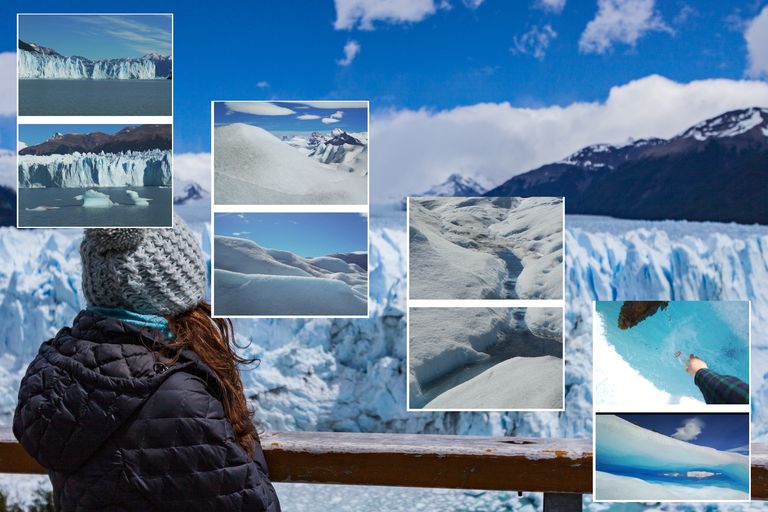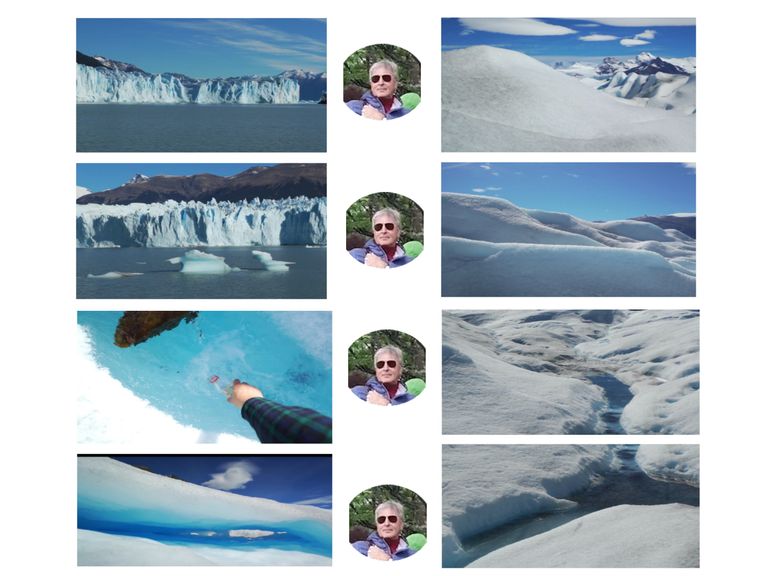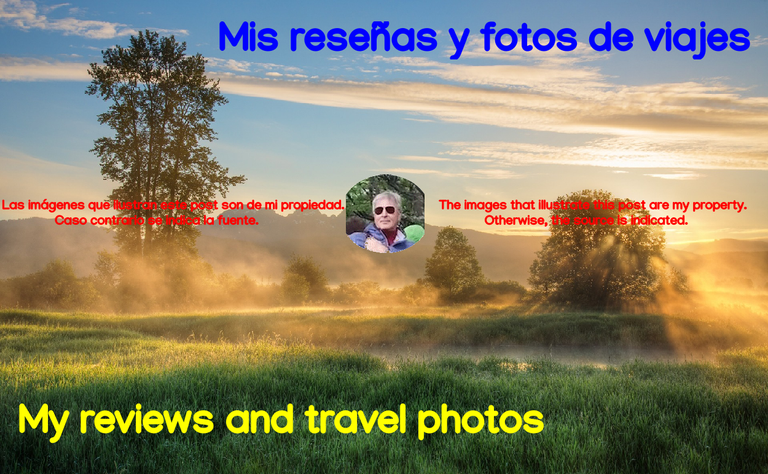
There are many places in the world that are beautiful but the Perito Moreno Glacier is simply breathtaking, imposing, wonderful.
We had promised to divide this adventure into two parts:
The first part is covered in this article and related the journey from the time we left El Calafate to the Perito Moreno Glacier:
From Calafate to the Perito Moreno Glacier, a dream tour.
There are two options for trekking on the glacier. One is 3 hours and is called Mini-Trekking and the other is 6 hours and is called Big-Ice
We opted for the second since it includes navigation and trekking. To hike up the glacier you have to take a boat that will take us to the starting point. Which is where the Los Glaciares National Park begins.
We start walking through the forest. It is a 40 minute journey before reaching the glacier.
The Glacier is located within the limits of Los Glaciares National Park in the province of Santa Cruz
We get closer and see what awaits us. The landscape changes abruptly. The stones and pebbles later become ice.
Two duly distanced groups go ahead of ours.
Observing the glacier from the top before starting to descend towards it is a fantastic, exciting and unforgettable feeling.
Properly equipped and with the appropriate footwear we begin to travel through a surreal world of ice. We are very careful when walking to avoid slipping.
The hits are very hard. You have to firmly put your feet on the ice so that the crampon sticks into it.
Endless ice dunes. They look like the desert dunes. Only instead of the soft sand we have the hard ice underfoot.
Ice dunes in the foreground.
The tour we are doing (Big-Ice) is the most demanding and only people from 18 to 50 years old can participate
The ice does not have color as the guide explained. Actually the blue color that we see in cracks is because in those parts the ice is more compact, more condensed.
On the surface the first 30 cm the ice is porous, with the formation of crystals, due to the external temperature.
In depth, as the ice becomes more compact it acts as a light filter. Absorb all the colors of the day. These colors quickly bounce back and forth on solid ice, thereby producing an optical illusion. It is the famous blue color that we see.
A break on the ice halfway is not bad. We have to walk almost 4 kms on the ice!
The water runs between some crevices of the glacier on the surface and falls into deep wells called "sinks".
In this sector it is a little softer than in the mini-trekking area where you can see very high walls. But later we see a similar landscape where a "step" occurs on the glacier, a very steep slope that causes the glacier to accelerate.
When ice accelerates, as it is not elastic, a tension occurs. The tension causes a fracture in the glacier. And the fractures produce the cracks that we have seen throughout our journey. Like this one that the guide shows us.
And that it gradually widens over the years. The glacier advances at a speed of up to 2 meters per day in the center.
This is produced by the action of the water that runs between the cracks and lubricates the glacier and makes it more mobile. In this way the glacier slides down the mountain.
It is a unique experience. The cost is quite high but the experience is worth it. It is something unique in everyone's life.
And we come to the end. Taking as a souvenir a bottle of water from the glacier. Original. Unpayable.

Hay muchos lugares en el mundo que son hermosos pero el Glaciar Perito Moreno es simplemente impresionante, imponente, maravilloso.
Habíamos prometido dividir esta aventura en dos partes:
La primera parte está cubierta en este artículo y relata el recorrido desde que salimos de El Calafate hasta el Glaciar Perito Moreno:
Desde Calafate al Glaciar Perito Moreno, un recorrido de ensueño.
Hay dos opciones para realizar trekking sobre el glaciar. Uno es de 3 horas y se llama Mini-Trekking y el otro es de 6 horas y se llama Big-Ice
Nosotros optamos por la segunda ya que incluye navegación y trekking. Para subir al glaciar hay que tomar una embarcación que nos llevará hasta el punto de partida. Aquí comienza el Parque Nacional Los Glaciares.
Empezamos a caminar por el bosque. Es un recorrido de 40 minutos antes de llegar al glaciar.
El Glaciar se encuentra dentro de los límites del Parque Nacional Los Glaciares en la provincia de Santa Cruz
Nos acercamos y vemos lo que nos espera. El paisaje cambia abruptamente. Las piedras y guijarros luego se convierten en hielo.
Dos grupos debidamente distanciados van delante del nuestro.
Observar el glaciar desde lo alto antes de comenzar a descender hacia él es una sensación fantástica, emocionante e inolvidable.
Debidamente equipados y con el calzado adecuado comenzamos a viajar por un surrealista mundo de hielo. Tenemos mucho cuidado al caminar para evitar resbalones.
Los golpes son muy duros. Hay que poner los pies con firmeza sobre el hielo para que el crampón se pegue.
Dunas de hielo interminables. Parecen las dunas del desierto. Sólo que en lugar de arena blanda tenemos hielo duro bajo nuestros pies.
Dunas de hielo en primer plano.
El tour que estamos haciendo (Big-Ice) es el más exigente y solo pueden participar personas de 18 a 50 años.
El hielo no tiene color como explicó el guía. En realidad el color azul que vemos en las grietas es porque en esas partes el hielo está más compacto, más condensado.
En la superficie los primeros 30 cm el hielo es poroso, con formación de cristales, debido a la temperatura exterior.
En profundidad, a medida que el hielo se vuelve más compacto actúa como un filtro de luz. Absorbe todos los colores del día. Estos colores rebotan rápidamente sobre el hielo sólido, produciendo así una ilusión óptica. Es el famoso color azul que vemos.
Una pausa en el hielo a mitad de camino no está mal. ¡Tenemos que caminar casi 4 kilómetros sobre el hielo!
El agua corre entre algunas grietas del glaciar en la superficie y cae en pozos profundos llamados "sumideros".
En este sector es un poco más suave que en la zona de minitrekking donde se pueden observar paredes muy altas. Pero luego vemos un paisaje similar donde se produce un "escalón" sobre el glaciar, una pendiente muy pronunciada que hace que el glaciar se acelere.
Cuando el hielo se acelera, al no ser elástico, se produce una tensión. La tensión provoca una fractura en el glaciar. Y las fracturas producen las grietas que hemos visto a lo largo de nuestro recorrido. Como este que nos muestra la guía.
Y que paulatinamente se va ampliando con el paso de los años. El glaciar avanza a una velocidad de hasta 2 metros por día en el centro.
Este se produce por la acción del agua que corre entre las grietas y lubrica el glaciar y lo hace más móvil. De esta forma el glaciar se desliza montaña abajo.
Es una experiencia única. El costo es bastante alto pero la experiencia vale la pena. Es algo único en la vida de cada uno.
Y llegamos al final. Llevando como recuerdo una botella de agua del glaciar. Original. Impagable.
Crossposting / Posteo cruzado.
Image source used as background at the beginning of the post / Fuente de la imagen usada como fondo al inicio del post: Unsplash by Roi Dimor.



Sources consulted (my property) for the preparation of this article. Some paragraphs may be reproduced textually.
Fuentes consultadas (de mi propiedad) para la elaboración del presente artículo. Algunos párrafos pueden estar reproducidos textualmente.
| Argentina Discovery. |  |
|---|---|
| Galería Fotográfica de Argentina. |  |
| Viaggio in Argentina. |  |

Upvoted. Thank You for sending some of your rewards to @null. Read my last posts to make sure that BLURT burning is profitable for you. Before using this bot please make sure your account has at least 100 BP. Get more BLURT:
@ mariuszkarowski/how-to-get-automatic-upvote-from-my-accounts@ blurtbooster/blurt-booster-introduction-rules-and-guidelines-1699999662965@ nalexadre/blurt-nexus-creating-an-affiliate-account-1700008765859@ kryptodenno - win BLURT POWER delegation@ ctime/burn-bot-liquid-blurtThanks!!!